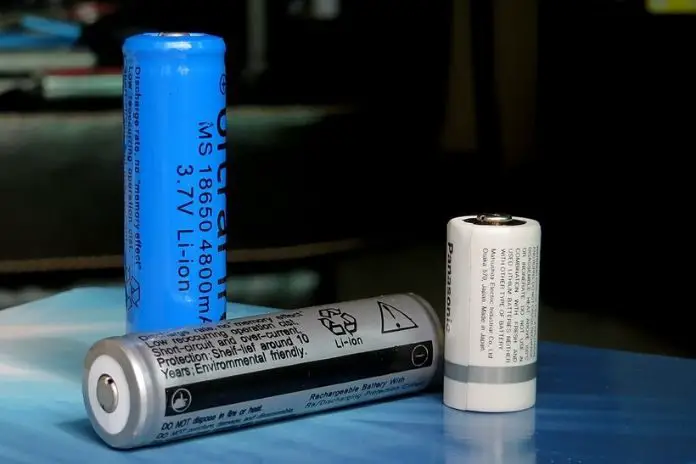
The breakthrough of the lithium-ion battery technology led battery manufacturers to a new world of innovations. Due to the high energy density as well as its longevity, battery companies are enabled to be more creative when it comes to design and engineering.
A perfect example of this is the CR123 batteries, also known as CR123A cells. These are cylindrical lithium-ion cells mostly used for a variety of small devices like flashlights, cameras, security devices, and more. These batteries come non-rechargeable and rechargeable variations with distinct specifications like the voltage, capacity, etc.
Is there a difference between CR123 and CR123A batteries? This is a question that a lot of people ask due to confusion. To clarify things, the simple and quick answer to this question is NO. There’s no difference between CR123 and CR123A.
What made caused this confusion is that some manufacturers labeled their battery as CR123A while the other manufacturers are using the CR123 to label the cells they produce. So, this means that it’s just a matter of labeling the batteries with the same specifications.
Regardless of brand and label, if you own a CR123 cell, it will have the same voltage rating, capacity, current output, etc. with any other CR123A, provided that they are on the same variation. A CR123 rechargeable battery is the same with a CR123A rechargeable battery, the same goes with the non-rechargeable variation.
If you take a look closely, you can also conclude that a CR123 rechargeable battery will be different from a CR123A non-rechargeable battery. With this being said, the bottom line is that CR123 and CR123A batteries are the same as long as they are both rechargeable or non-rechargeable.
I hope my answer above enlightened you and satisfied your purpose of being here, trying to figure out if the CR123 battery is different from the CR123A. However, you may want to stick for a while and continue to read along cause I will be discussing a lot more essential information with regards to this battery.
Features and Specifications of the CR123 Lithium-Ion Cell
As I mentioned and established earlier, the CR123 and CR123A just label used refer to lithium-ion cylindrical batteries commonly used in small devices. These are batteries that come in a rechargeable type and non-rechargeable type. These batteries typically have a diameter that measures 17 mm and a height that measures 35 mm.
Non-rechargeable CR123A batteries are commonly labeled as “CR123A Batteries,” and the rechargeable ones are typically referred to as “RCR123A Batteries”. Rechargeable CR123 batteries may also be different depending on the manufacturer, and some of these labels include K123A, EL123AP, 5018LC, VL123A, and more.
The specifications of the non-rechargeable CR123A cell is different from that of a rechargeable CR123A, to understand it better, let us break them down.
Non-Rechargeable CR123A Battery Specifications
A CR123A cell in a non-rechargeable variation typically has a capacity rated at 1500 mAh and a nominal voltage of 3 volts. Its life expectancy is within the range of seven to ten years, which makes them an excellent option for home security devices and standby electronics that can be used for emergencies.
A non-rechargeable CR123A cell is also engineered to take on high current drains that make it an ideal choice for devices that require a lot of power in short bursts of time.
Rechargeable CR123A (RCR123A) Battery Specifications
An RCR123A or rechargeable CR123A battery typically has a capacity ranging from 500 to 800 mAh with a voltage measured at 3.6 volts or 3.7 volts. However, as a cell designed to recharged and be used multiple times, and RCR123A is a desirable power cell recommended for devices that are frequently used.
Differences Between the CR123A and RCR123A Power Cells
To understand CR123A batteries, it is best if we talk about how a non-rechargeable CR123A cell different from the rechargeable (RCR123A) type. Here, I will be going to dig deeper into the kinds of variations of these batteries. This will allow you to learn how both of them work and to understand more about their behaviors.
Before we proceed to tackle their main differences, let me refer to the rechargeable type as RCR123A and the non-rechargeable type as CR123A.
The Output Voltage Ratings of the Batteries
One of the main differences between the CR123A and RCR123A is the output voltage that they offer. I mentioned a while ago that the CR123A has a 3 volts nominal voltage, while the RCR123A has a voltage that ranges from 3.6 volts to 3.7 volts.
This difference in the voltage output makes them unsuitable in some applications because it can cause a few operation issues in a variety of sensitive devices. So, before replacing a CR123A cell with an RCR123A, you have to check the device’s voltage requirements to be sure that it can take an RCR123A battery.
Maximum Capacity of Both Kinds of Battery
Another main difference between the RCR123A and CR123A batteries is the maximum capacity they both offer. CR123A cells have more battery capacity typically rated at 1500 mAh. On the other hand, an RCR123A cell has a capacity ranging from 500 mAh all the way to 800 mAh, but there also models with a cell capacity range within 700 mAh to 750 mAh.
Usually, an RCR123A cell with a higher capacity will have a low rating on its maximum drain compared to the one with low capacity.
Shelf Life and Storage Aspect
Both types of CR123 batteries also differ in shelf life and the aspect of how they are stored when you purchase them. RCR123A cells are usually built and transported with a 50% charge, and they are recommended to be fully charged first before using.
While CR123A cells are usually manufactured fully recharged, and they transported as is. This makes these batteries ready to use. With regards to shelf life, a CR123A can last from seven to ten years. On the other hand, an RCR123A cell will start losing 10% to 30% of its capacity to store charge after its first year of storage.
The Manner of Applications of the Batteries
The most obvious difference between the two types of CR123 batteries is the way they both operate. A CR123A power cell is the kind of battery only designed to be discharged, and once it gets drained and empty, it needs to be properly disposed of.
In contrast, an RCR123A cell is a kind of battery that can be discharged and recharged, allowing users to use it multiple times. This makes them the ideal choice for small electronic devices that are frequently used. Due to this difference between them, it makes each type will be ideal for several applications.
The Safety Aspect of the Batteries
Both types of CR123 batteries are designed not to be disassembled or tampered because it can be harmful to people. They are only designed to be used and not to be abused.
However, with this said, the difference between these batteries in the aspect of safety is that a CR123A is built only to be used and properly disposed of while RCR123A batteries are engineered to have a built-in safety feature designed to protect the battery from any electrical issue like overvoltage and short circuits.
The Most Common Benefits that CR123 Batteries Offer
Compared to the cylindrical batteries in the market today, mostly the power cells with alkaline technology. CR123 power cells are considered to be a better choice due to the specifications that they offer.
Apart from being a more powerful option, CR123 batteries are also more beneficial to use. To get a better picture and understand this better, I’ll give you a list of the common benefits they offer.
1. Longer Lasting and Better Shelf Life
As mentioned earlier, CR123 cells feature the lithium battery technology, and they come in rechargeable and non-rechargeable varieties. This makes them a more ideal choice than their alkaline counterparts because RCR123A is batteries that can be used multiple times due to their ability to be recharged.
When it comes to CR123A cells, they are built to last from seven to ten years. This allows consumers to have get the most of the batteries giving them the chance to save money in the long run.
2. They Offer Higher Energy Density
Another great thing about CR123 batteries is they have higher energy density. These batteries are engineered with lithium cell technology, allowing them to store more energy compared to their counterparts. Due to this quality, these batteries can power devices longer since they have more power to offer.
3. Exceptional Money Saving Potential
One of the greatest benefits that CR123 batteries, especially the rechargeable type, is the excellent money-saving potential that they offer. Due to their ability to accept charge, these batteries are designed to be used several times and to last longer.
As long as it is used for a device that supports an RCR123A battery, consumers will only purchase a battery one time and use it for a year. Unlike the disposable ones that you will have to replace every six months. This allows consumers to save the money that will have to spend on purchasing the replacement batteries.
Final Thoughts
This article enlightened you about the CR123 batteries and clarified that there is NO difference between the CR123 and CR123A.
Again to emphasize things, the CR123 and CR123A are only labeling for the same battery that comes in two different types; rechargeable and non-rechargeable. All CR123A rechargeable cells have the same specifications and same for the CR123A non-rechargeable batteries.





